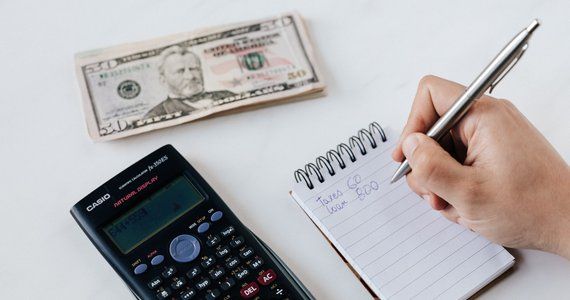How to do a budget
August 24, 2020
Having a budget helps you to feel in control of your money. You can put aside money for big bills when they arrive, and plan savings to achieve your money goals.
You don’t need an accountant or special software to set up your own budget. Start by looking at where you are right now and where you want to be.

Set your money goals
First, work out why you want to do a budget. This can help you to decide where you want your money to go.
Ask yourself: what is my goal? It could be to stay on top of bills, save for emergencies, pay for your children’s education, or save for a holiday or a house deposit.
See where your money goes
Having a clear picture of your regular expenses and spending habits will help you set up your budget.
To do this, track your spending over a week, a fortnight or a month. See track your spending for practical ways to do this.
How to set up your budget
Use how often you get paid as the timeframe for your budget. For example, if you get paid weekly, set up a weekly budget.
Then follow these steps to set up each section.
Set up your budget and save it online or use our Excel budget spreadsheet.
1. Record your income
Record how much money is coming in and when. If you don’t have a regular amount of income, work out an average amount.
Make a list of all money coming in, including:
-
how much
-
where from
-
how often (weekly, fortnightly, monthly or yearly)
This money could be from your wages, pension, government benefit or payment, or income from investments.
2. Add up your expenses
Record your regular expenses, including:
-
what for
-
how much
-
when
Regular expenses are your ‘needs’ — the essential items you need to pay for to live. These include:
Fixed expenses, for example:
-
rent or mortgage payments
-
electricity, gas and phone bills
-
council rates
-
household expenses, like food and groceries
-
medical costs and insurance
-
transport costs, like car registration and public transport
-
family costs, like baby products, child care, school fees and sporting activities
Debt expenses, for example:
-
personal loan repayments
-
credit card payments
-
mortgage repayments
Unexpected expenses, for example:
-
car repairs and services
-
medical bills
-
extra school costs
-
pet costs
To make sure you’ve recorded all your expenses, look at your bills or bank statements. If you tracked your spending, use your list of transactions.
3. See if you can save
Having some savings can help create a safety net for unexpected expenses. Set a savings goal and work out how much you can save each payday.
Use our savings goals calculator
Work out how long it will take you to reach your savings goal.
4. Set your spending limit
The money you have left after expenses and savings is your spending money. This money is for ‘wants’, such as entertainment, eating out and hobbies.
Make a plan for what you want to do with your spending money. This will help you to keep within your limit. Keep track of your spending so you always know how much you’ve got left.
Set up three bank accounts: a high interest savings account for savings, and two transaction accounts for spending and bills. Schedule transfers of your savings and direct debits for your bills to automate your finances.
Review your budget regularly
It’s important to adjust your budget as things change. For example, if you find you can’t cover all your expenses, savings and spending, you may have to reduce your spending limit, or change your savings goal.
For ideas to help reduce spending, see simple ways to save money. You can also look for ways to increase your income.
Please contact us on |PHONE| if you seek further assistance on this topic .
Source : Moneysmart.gov.au August 2020
Reproduced with the permission of ASIC’s MoneySmart Team. This article was originally published at https://moneysmart.gov.au/budgeting/how-to-do-a-budget
Important note: This provides general information and hasn’t taken your circumstances into account. It’s important to consider your particular circumstances before deciding what’s right for you. Although the information is from sources considered reliable, we do not guarantee that it is accurate or complete. You should not rely upon it and should seek qualified advice before making any investment decision. Except where liability under any statute cannot be excluded, we do not accept any liability (whether under contract, tort or otherwise) for any resulting loss or damage of the reader or any other person. Past performance is not a reliable guide to future returns.
Important Any information provided by the author detailed above is separate and external to our business and our Licensee. Neither our business nor our Licensee takes any responsibility for any action or any service provided by the author. Any links have been provided with permission for information purposes only and will take you to external websites, which are not connected to our company in any way. Note: Our company does not endorse and is not responsible for the accuracy of the contents/information contained within the linked site(s) accessible from this page.
Powered by WPeMatico
